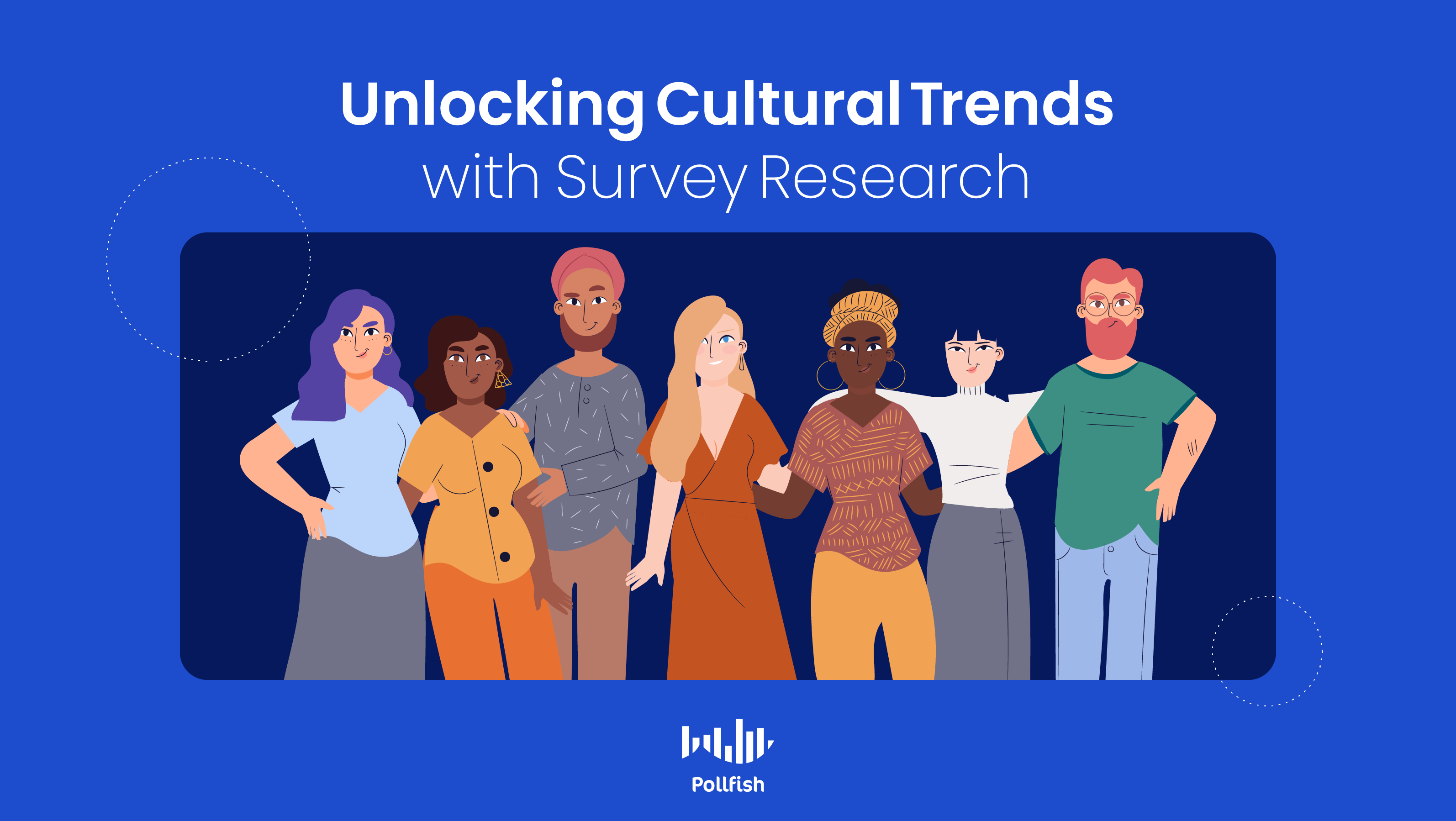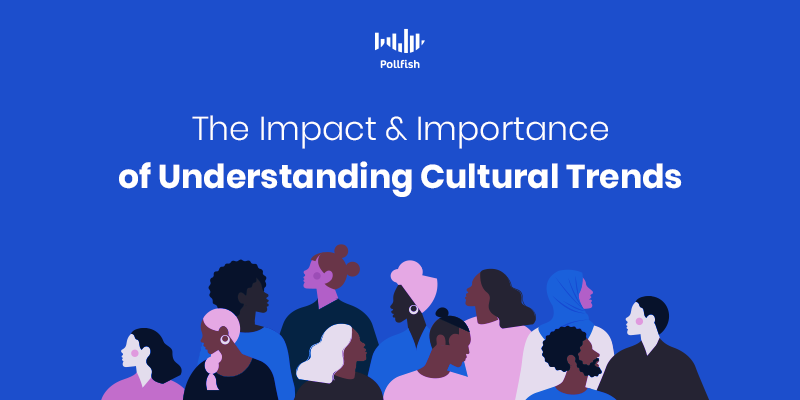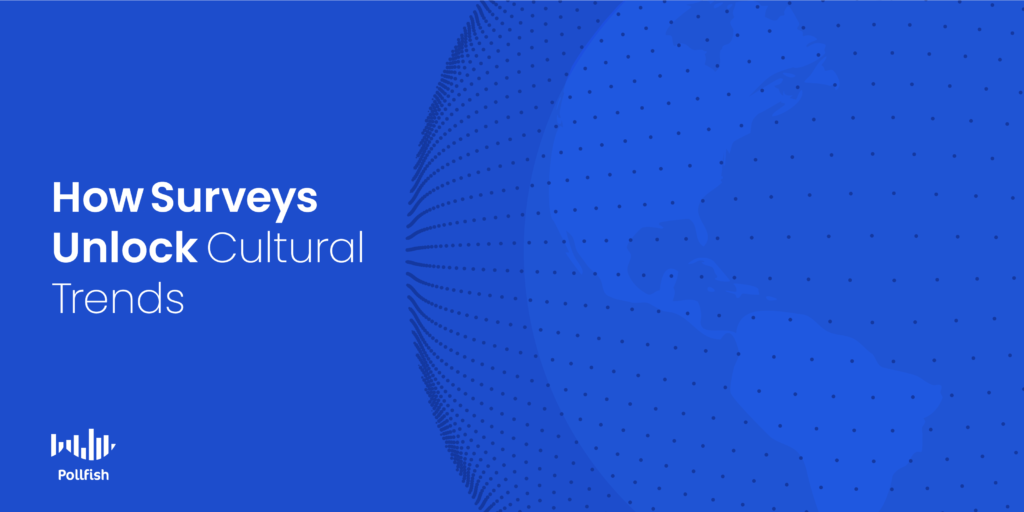Using Survey Research to Unlock Cultural Trends

In order to stay adept at serving customers, brands must be attuned to cultural trends, whether they’re operating domestically only or marketing to customers abroad.
Our Global Customer Expectations poll revealed that almost a quarter of global customers seek brands that are more sensitive to the cultural aspects of their country.
Another supporting study found that brand involvement in cultural trends makes up a full 25 percent of a customers’ purchase decision. Evidently, brands have a stake in cultural involvement when it comes to satisfying their customers.
Unlike some of the more static aspects of marketing, cultural trends are, by nature, inclined to shift and fluctuate. Thus, the challenge becomes not merely discovering cultural trends but assuring their relevance and showing cultural deference.
This article delves into cultural trends, the need for businesses to be culturally competent and relevant, how surveys uncover various cultural trends and how to set up a survey to extract this information.
Understanding Cultural Trends
Cultural trends refer to popularized alterations and tendencies in culture, whether they are material or nonmaterial. These involve emerging or continuous behaviors, items and the relations of both. For example, product use; some trends involve using products in a particular way or for a particular act.
Cultural trends can also specifically apply to the dominant or emerging cultural aspects present among different cultures. This is a matter of concern for businesses that operate both internationally and domestically, as customers expect businesses to understand cultural matters that pertain to their country — as our survey found — along with others.
For example, a study by Salesforce found that 66% of customers expect companies to understand their unique needs and expectations, yet 66% also say that they are treated like numbers. Additionally, 52% of customers expect offers to always be personalized.
Understanding cultural differences and trends is crucial in each case. In regards to the former, understanding cultural practices and other concerns is crucial to make customers feel distinguished and as more than just another number being marketed to.
Regarding the latter, personalization cannot be fully achieved without paying attention to cultural matters. In fact, companies may incur issues when trying to personalize, by not taking into account cultural differences.
Businesses must also take heed to the cultural trends present within their country, as it is a means of staying relevant. Some cultural trends align with certain values, which is crucial to include in marketing campaigns. This is because 71% of customers prefer buying from companies aligned with their values.
Understanding cultural trends is key for market research, especially if a brand uses its name in its research; it is also important for a wide breadth of marketing campaigns.
The Importance of Cultural Trends

To piggyback off of the previous section, understanding cultural trends is a must for various reasons. The two main reasons deal with domestic and international customers. However, they also apply to dealing with employees, vendors and partners.
On the international front, few businesses can evade the need to deal with foreign clients, customers and employees. Given that the world is globalized and global markets open new opportunities, businesses would be at a disadvantage not to branch out into new geographic markets.
In order to properly cater to the international market, businesses must be acquainted with cultural trends across geographies, especially those that pertain to specific countries.
Cultural change is broader than social change, although it can include it in its sphere of influence. As such, societies and their markets are the results of culture. It is a culture that sets boundaries, limits and dictates what is acceptable or not. Thus, businesses must be in tune with the culture of the market they wish to pursue.
Understanding cultural trends is the gateway into cultural competence, the ability to effectively interact, work, and develop meaningful relationships with people from various cultural backgrounds.
Cultural competence allows brands to ease into different geographic markets, as it makes global customers feel understood and heard, a key tactic to ward off making them feel like just another number.
Understanding cultural trends also helps businesses avoid cultural misunderstandings, the kinds that directly cause businesses to lose customers and tarnish their reputation. This can get to a bad enough point in which a business’s harmless misunderstanding makes the news, a blow to brand equity and reputation.
Finally, being culturally competent is necessary for conducting business domestically, as customers are more likely to buy from brands that incorporate timely cultural aspects into their marketing and business at large (as proven in the intro).
Incorporating cultural trends domestically posits a business as more culturally savvy than its competitors. Additionally, it speaks directly to some of the thoughts occupying customer’s minds.
Moreover, the US and many other countries have significant immigrant populations; thus it is imminent for companies to be in contact with people of other cultural backgrounds, whether they are customers, employees, partners, vendors or clients. Thus, it is key to be in the know of all the cultural trends of your target market.
How Surveys Help Discover All Kinds of Cultural Trends
Surveys are a tool that opens many doors into the minds of customers, and customer satisfaction is a prominent objective to keep any business afloat.
Firstly, surveys define a business’s clientele; this is done via market segmentation, in which market researchers granularly define their target market by segmenting into different groups. This helps businesses learn the demographics of their most valuable customers.
Through this practice, businesses uncover the ethnicities, cultures and national backgrounds of their targeted customer segments. This allows businesses to zero in on particular cultural trends: those that are most relevant to the segments of their target market, specifically the most valuable segments.
Furthermore, surveys allow brands to delve into virtually any topic of their choice and understand it at an in-depth level. Thus, they can do so by creating surveys that delve into their target market’s cultural trends.
Surveys, especially the online variety, provide the ease of deploying questionnaires to a business’s intended audience. Most conveniently, online surveys are completely anonymous, so respondents can freely provide answers on all cultural matters, even those that are more sensitive in nature.
Businesses can cover various cultural matters in just one survey, though longer surveys should provide survey incentives to guarantee participation. Businesses can also set up survey campaigns that include multiple smaller-length surveys that cover various topics within cultural considerations.
Surveys have the power to generate both quantitative and qualitative market research, depending on how the questions are set up. Multiple-choice questions lend themselves to quantitative data, while open-ended questions allow businesses to gain qualitative data unique to each survey respondent.
Either way, businesses can gain both kinds of data within just one survey. To do so, they can ask a multiple-choice question and follow it up with an open-ended question.
Survey Questions that Unlock Cultural Trends

The questionnaire is the heart of a survey; therefore, brands must arrange it strategically to set their survey up for success.
They should also target respondents differently per country in the screening portion of the survey. After choosing the customer segments to target, researchers need to create their questionnaire accordingly.
Because all countries, even those that appear to be culturally similar, have distinct cultures, market researchers should focus on specific questions per country. However, before veering into the specific, there are certain general questions that researchers should begin with as a best practice.
The following provides question examples on the preliminary questions market researchers can use in their cultural trends survey before delving deeper:
- What is the biggest cultural change you’ve seen [country name] undergo?
- Multiple-choice and open-ended answers
- How do you feel about [a cultural event, major recent occurrence, trend observed via secondary research] ?
- Scaled and open-ended answers
- Which brands do you use for [a particular need]?
- Multiple-choice, multiple-selection answers
- Do some research on the brands from a particular country
- What would be considered rude coming from a company in your country?
- open-ended answer
- What are some of the biggest trends in [your niche] in your country?
- Multiple-choice and open-ended answers
Being In Tune With All Customers
A lack of cultural awareness has grave costs on businesses. That’s why virtually all businesses must be culturally aware within their domestic and international markets. The latter is especially important in the age of the internet, where global customers may discover a brand digitally, therefore opening the doors for businesses to venture into global markets.
While surveys are a convenient method to uncover cultural trends and differences, they are only as useful as the online survey platform that administers them. A strong online survey platform must be able to facilitate all stages of the survey process: from the screener, to the questionnaire, to deployment and finally, filtering data after the survey completes all of its quotas. Additionally, a strong survey software uses artificial intelligence to perform quality checks that remove gibberish answers, flatlining and other poor data to ensure the highest quality of customer data.
Businesses should opt for such a platform to not simply obtain cultural trends information, but to engage in a valuable market research campaign.
Pollfish Marketing Team
Ready to Try Pollfish?
Create your survey with AI, target high-quality respondents starting at $0.95 per complete, and start getting results in just minutes in real-time. From running a simple product concept survey to managing a constant stream of trackers for dozens of clients in dozens of countries, we’ve got you.
